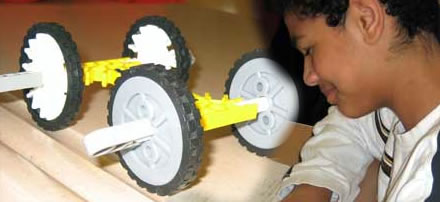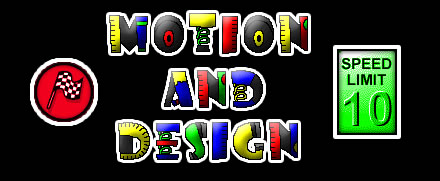
Lesson 5: Testing the Motion of Vehicles Carrying a Load

Activities:
- SCIENCE NOTEBOOK: Students write the question to be investigated: How will adding blocks to the vehicle change the way the vehicle moves? Students write a prediction about the question. For future replication, students also write the materials in the notebook that are used for this investigation.
- Discussion of predictions (with group and then with class).
- Show two blocks of wood and ask students how the vehicle could be adapted to carry this load (brainstorm).
- Distribute timers.
- Practice using the timers (shorter time = higher speed)
- With this experiment, students will conduct multiple trials of the investigation. Ask students about the importance of using multiple trials.
- Distribute 4-A and discuss how to use the graph to show results. Directions: Glue 4-A into the science notebook when complete. Handout 4-A is the data/observation portion of the lesson.
- Students use pages 20-22 from the student book to complete the lesson.
- SCIENCE NOTEBOOK: Students will record the procedure and results of the investigation.
- Number 10 - Discussion of results from the lesson. Then, discuss questions on page 56 of teacher’s guide:
- What did you observe when testing various loads (blocks)?
- How did the vehicle move when it was loaded with two blocks?
- How did the motion of the vehicle change when you removed one block? How did it change when you removed both blocks?
- What do you think would happen if you added a third and fourth block to the vehicle?
- When the vehicle carried no blocks, what was left to influence its motion? (the weight of the vehicle)
- What can you conclude about the effects of load (such as blocks) on a vehicle’s motion? (The heavier the vehicle, the longer the vehicle takes to respond to a force).
- What situations at home or in school may be similar to what you tested in this lesson?
- SCIENCE NOTEBOOK: Complete LOL from discussion and from content blast on mass versus weight (see also page 51 from the teacher’s guide).

